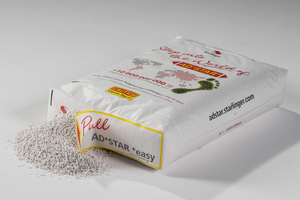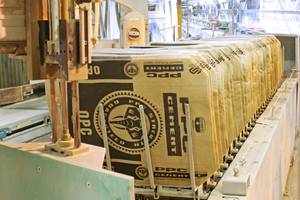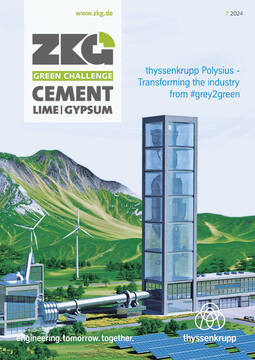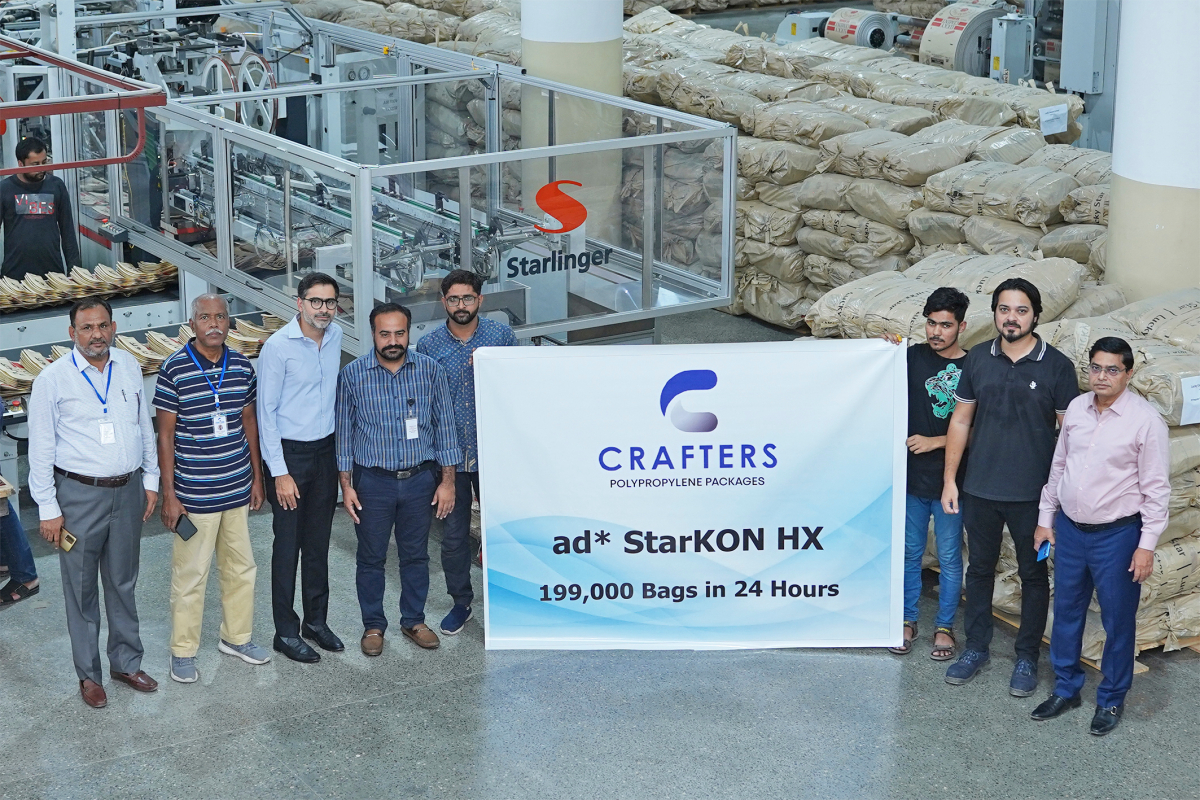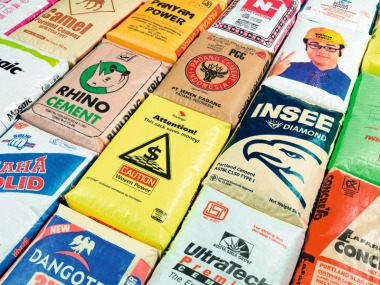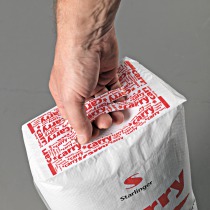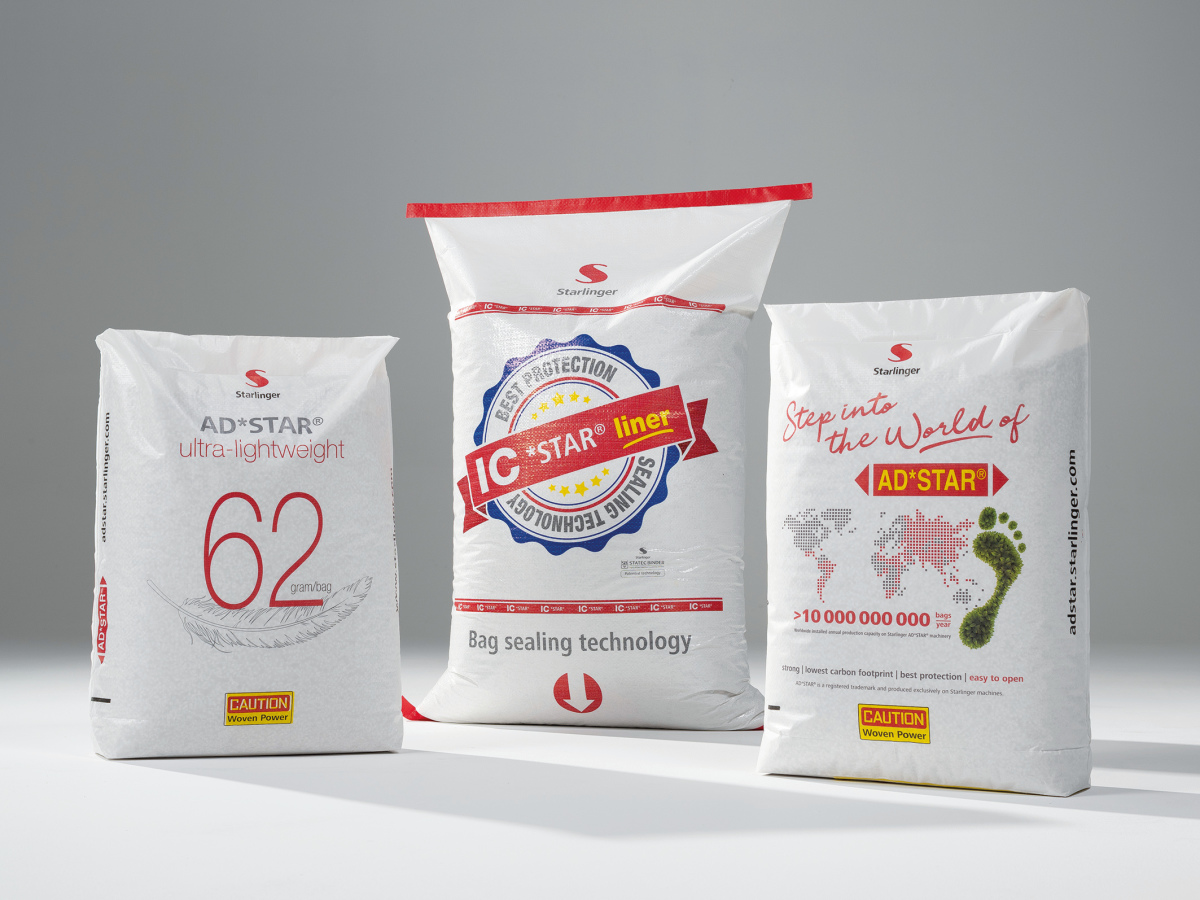On the road towards more sustainability
To curb greenhouse gas emissions in the cement industry, cement packaging is a factor to be considered.
About 4.1% of the total global CO2 emissions are caused by the cement industry. The biggest share of them originates from process emissions from clinker production; but also thermal emissions as well as indirect emissions – such as from electricity production, for example – add to the total greenhouse gas emissions caused by cement production.
Savings potential for greenhouse gases
Strong, tear-proof cement packaging can help to reduce emission output by saving tons of cement that go to waste due to sack breakage. By reducing breakage rates, cement losses can be cut significantly, and consequently also the need to produce new cement to replace the lost quantities. Made of woven polypropylene tape fabric, AD*STAR block bottom valve sacks, developed and patented by Austrian Starlinger & Co GmbH, are highly resistant to breakage. The use of high-strength polypropylene tapes for fabric production and the tight sealing of the sack bottom and top ensures low sack breakage even during rough handling, dropping, or after contact with water.
A life cycle assessment commissioned by Starlinger in 2016 showed that AD*STAR sacks have a lower global warming potential (or carbon footprint) than paper sacks.
A decisive factor for the positive results of AD*STAR sacks in this study are said low breakage rates in the course of their life cycle: They lie at 1% during the entire usage phase of the sacks – i.e. from filling, transport and storage until unpacking of the cement – compared to 4 to 5% in the case of paper sacks. This means that if AD*STAR sacks are used, less cement is lost and needs to be replaced, and less packaging is needed – consequently, less greenhouse gases are produced. Millions of tons of CO2 emitted due to extra cement production could be saved each year.
Sustainability in the bag
Reduced raw material input, 100% recyclability, and inclusion of recycled content are the main points to reach more sustainability in cement packaging.
AD*STAR sacks are designed for recycling: They are a mono-material packaging solution, made of polypropylene and produced without the use of glue or sewing threads, making them easy to recycle. The main challenges for recycling AD*STAR sacks, however, are cleaning the sacks from residual cement dust, and the establishing of collection systems for the sacks to create a closed packaging loop – which would be the ideal goal. Currently, most of the AD*STAR sacks worldwide are entering a second life cycle after their use as cement packaging, e.g. as packaging for other materials, carrier bags, or even as simple roof coverings, whereas paper sacks usually are incinerated after usage.
Regarding recycled content, recycled polypropylene produced mostly from other packaging applications is already used for AD*STAR sack production. Starlinger has been working on developing the technology to recycle post-industrial polypropylene packaging during the past years and has achieved very satisfactory results. Because polypropylene is degrading in the recycling process, it is important to ensure that the recyclate has a very high quality. Otherwise it cannot be used in tape extrusion and weaving, and sacks with recycled content will not have the same strength like sacks made from virgin material. Scientific trials carried out by Starlinger showed that a recycled content of 50% is possible without negatively affecting the standard properties of an AD*STAR sack, given the recycled material quality fulfils the prescribed quality standards.
Resource efficiency is a major focus of Starlinger in technology development besides aiming for highest quality and efficiency in packaging production. Starlinger machines are energy-efficient, easy to handle, and operate with minimum raw material input and low waste generation. AD*STAR sack production machinery has been designed to manufacture AD*STAR sacks in an efficient, energy-saving production process – from tape extrusion, stretching and winding, to weaving, laminating and conversion. The use of stretched polypropylene tapes is the reason why the sack weight of a 50 kg AD*STAR sack can be as low as 62 g, while a same-sized 2-layer paper sack weighs about 140 g, and a PE film sack 150 g.
The technology
Starlinger provides the full range of technical equipment together with the know-how needed for the production of AD*STAR sacks: polypropylene tape extrusion lines, tape winders, circular looms for fabric production, coating and printing machinery, as well as the ad*starKON block bottom sack conversion lines. The entire AD*STAR technology has been developed with the focus on high sack quality and resource-conserving production. It ensures the high strength and durability of AD*STAR sacks, as well as smooth and trouble-free cement filling on the most modern filling lines. Starlinger’s AD*STAR conversion lines cover a broad format range – from a sack capacity of only 5 l up to 115 l. Currently, the company is developing a technology to increase the coefficient of friction (COF) of AD*STAR sacks to ensure stable stacking. An anti-slip surface makes storage and handling of AD*STAR cement sacks even safer, especially in humid or dusty environments.
Currently, more than 30 billion AD*STAR sacks are produced worldwide on Starlinger machinery every year.
AD*STAR cement sacks – advantages:
High strength and durability – reducing CO2 emissions due to low breakage rates
Raw material savings due to the low packaging weight
Easy-to-recycle mono-material packaging solution
Suitable for automated filling, handling and palletising
Fully automated sack production
No spillage or leaking because of the polypropylene coating
Adjustable coefficient of friction (COF) – ad*grip technology
Adjustable air permeability due to optional micro-perforation – keeps dust formation to a minimum and protects moisture from entering the sack (longer shelf life)
Tamper and theft-proof
Attractive sack design with high-quality print or laminated BOPP film for best brand promotion
Conclusion
The need to reduce the carbon footprint of the cement industry has led to increased efforts to curb greenhouse gas emissions in all areas. Regarding cement packaging, Starlinger & Co GmbH offers a sustainable solution: AD*STAR block bottom valve sacks. The sacks are made of coated polypropylene tape fabric, making them a very strong and durable packaging for cement. With around 1% the breakage rate in the course of their life cycle is a lot lower than that of paper bags, which lies between 4 – 5%. By using AD*STAR sacks, the amount of cement lost due to spillage is significantly reduced. Tons of cement that needs to be produced to replace the losses are saved, and CO2 emissions reduced.
AD*STAR cement sacks are a mono-material packaging solution, manufactured in a patented production process without the use of glue or sewing thread. It is also possible to include recycled content in the packaging, given the quality of the recyclate is high. Due to the high strength of woven polypropylene tape fabric the sack weight can be as low as 65 g, compared to paper sacks (2-layer, 140 g) or PE film sacks (150 g), making AD*STAR sacks a truly sustainable packaging solution for cement.

